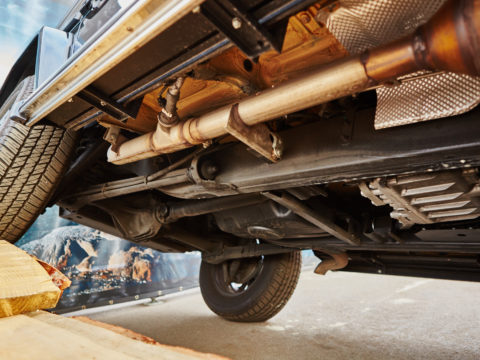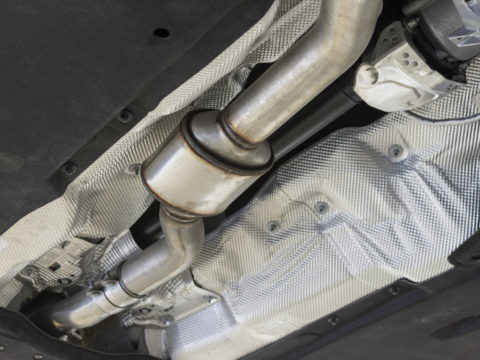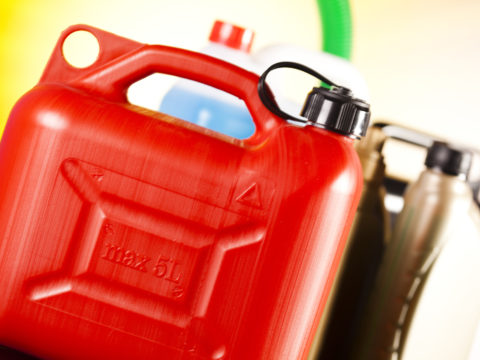Are you concerned your vehicle has an EVAP leak? Diagnosing an EVAP leak can be tricky, but there are some key symptoms you should look out for. In this article, we’ll be discussing some of the most common EVAP leak symptoms that drivers may notice in their vehicles and what you can do to address them.
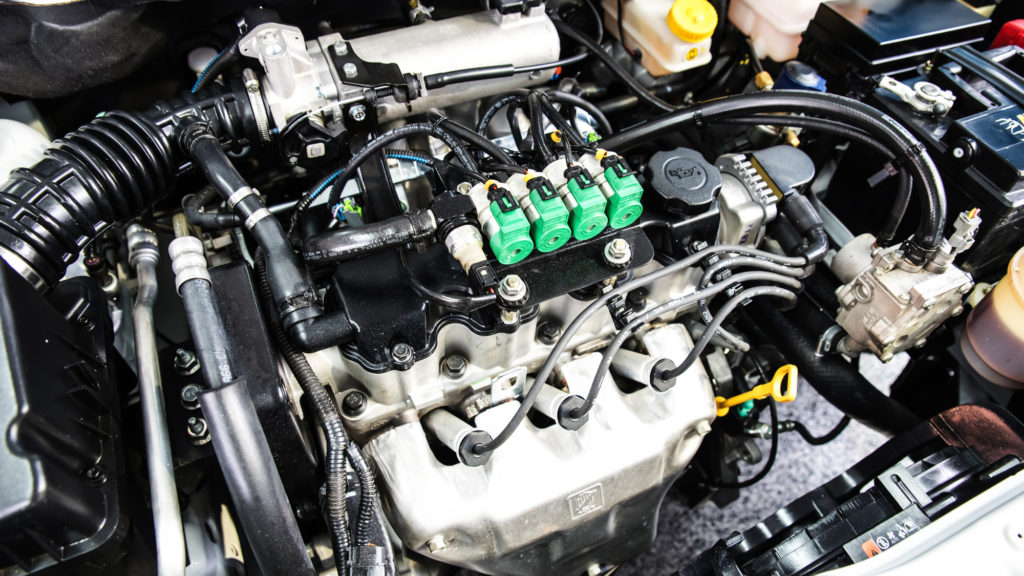
Contents
What is an EVAP System?
The evaporative emission (EVAP) control system prevents gasoline vapors from escaping into the atmosphere.
The system contains a small charcoal canister that absorbs and stores fuel tank vapors. A purge valve at the top of the canister opens when the engine vacuum causes its internal pressure to exceed atmospheric pressure. This process allows stored vapors to be drawn into the engine and burned.
What Happens When the EVAP System Goes Bad?
When the EVAP system is not functioning correctly, fuel vapors can escape from the fuel tank and enter the engine. This issue can cause the engine to run rich and damage the catalytic converter.
8 Common Symptoms of an EVAP Leak
There are several common symptoms of an EVAP system leak, including:
- Check Engine light is on
- Poor fuel economy
- Fuel System Service light is on
- Surging/stalling while driving
- Engine hesitation or misfire
- Low power/lack of power
- You smell burning carpet or fuel in the cabin
- Excessive smoke from the exhaust pipe
Causes of EVAP Leaks
Several factors can cause EVAP leaks. Some of the most common causes include:
- Leaks at the gas cap
- Bad purge valve
- Broken or disconnected hoses
- Holes or cracks in the fuel tank, filler neck, or EVAP components
- Defective charcoal canister
EVAP OBD2 Codes List
When the Check Engine Light is on, the car’s computer stores a code or diagnostic trouble code (DTC) in its memory. Mechanics and technicians use the OBD2 (On Board Diagnostic) codes list to diagnose problems with the devices that hook up to a car’s computer.
Here is a list of some of the most common EVAP DTCs and their meanings:
- P0455 – EVAP system gross leak detected
- P0456 – EVAP system very small leak detected
- P0442 – EVAP system small leak detected
- P0440 – EVAP system malfunction
- P0443 – EVAP system purge control valve circuit or incorrect purge control valve flow
- P0441 – EVAP system incorrect purge flow or flow during non-purge
- P0446 – EVAP system vent control circuit malfunction
- P0457 – EVAP system leak detected (fuel cap) or EVAP canister
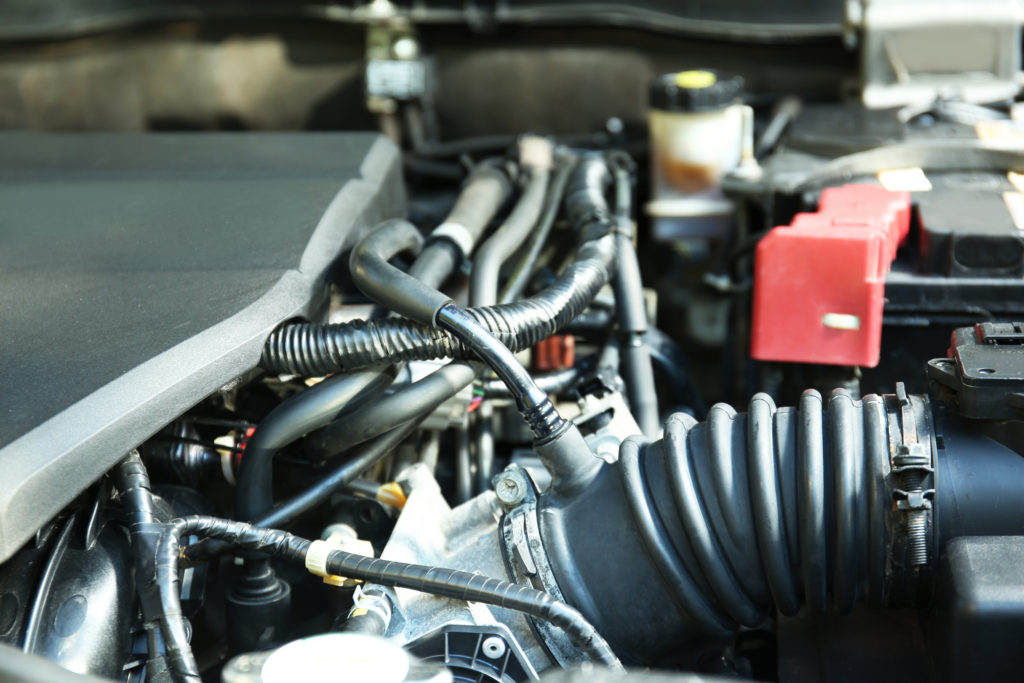
How to Fix EVAP Leaks
If you have determined that you leak into your EVAP system, there are several things that you can do to fix it. The solution will depend on which code was displayed.
Replace Diagnostic Leak Tester
If your car’s Check Engine Light is on, a bad diagnostic leak tester is one of the most common causes. The diagnostic leak tester monitors pressure changes in the EVAP system when it detects a purging event. If the leak tester is not working correctly, it will not detect the purge event, and the Check Engine Light will stay on.
Replace Gas Cap
If the Check Engine Light is on and you get a code for a bad gas cap, replacing the gas cap may fix the problem. If the gas cap is not sealing correctly, fuel vapors will escape from the tank.
Replace Hoses and Fittings
If you have a leak in a hose or fitting, replacing the hose or fitting may fix the problem. Be sure to tighten all of the fittings and connectors to ensure no air leakage.
Clean Fuel Tank
A crack in the tank, filler neck or EVAP components can cause an air leak into the fuel tank. Cleaning the tank with soap and water may remove contaminants causing an air leak. Replacing cracked or damaged tanks usually requires replacing them.
Replace Gas Tank
If you have cleaned your gas tank but there is still an air leak, you may need to replace the tank.
Clean Charcoal Canister
If you have a smell of fuel in the cabin or your Check Engine Light is on, the charcoal canister could be a problem. The charcoal canister stores fuel vapors until it can be purged into the engine. If the canister is clogged or dirty, it will not do its job correctly. Cleaning the canister with soap and water may fix the problem.
How Much Does an EVAP Leak Cost to Fix?
The cost to fix an EVAP leak will vary depending on the car and the severity of the leak. Replacing a gas cap may only cost a few dollars, but replacing a defective charcoal canister can cost hundreds.
In most cases, the best way to find out what is causing your Check Engine Light to come on is to take your car to a mechanic or technician who can diagnose the problem. They will be able to read the code stored in the car’s computer and tell you what is wrong.
FAQs
Before you go, check out these commonly asked questions.
Is It Safe to Drive with an EVAP Leak?
It is safe to drive with an evaporative emission (EVAP) leak. The only potential danger is that the engine may run rich and damage the catalytic converter.
How Long Can You Drive with an EVAP Leak?
It is recommended not to drive your car more than 30-50 miles with an EVAP leak.
How Do I Know If My EVAP Canister Is Bad?
Here are just a few common symptoms that may indicate that your EVAP canister is bad:
- The check engine light is on
- Poor fuel economy
- The service light is on for the fuel system
- There are problems with the vehicle’s performance or drivability in general
How Long Does a Charcoal Canister Last?
The lifespan of a charcoal canister varies depending on the make and model of the vehicle. However, it is usually not very long, around 5-7 years.
Does EVAP Leak Affect Gas Mileage?
Yes, a car’s fuel economy may be lower in vehicles with a defective EVAP system.
How Do I Reset the Check Engine Light and Code?
There is no universal way to reset the check engine light and code. However, most carmakers have their own specific procedures. You will need to refer to your owner’s manual or contact the dealership for more information.

